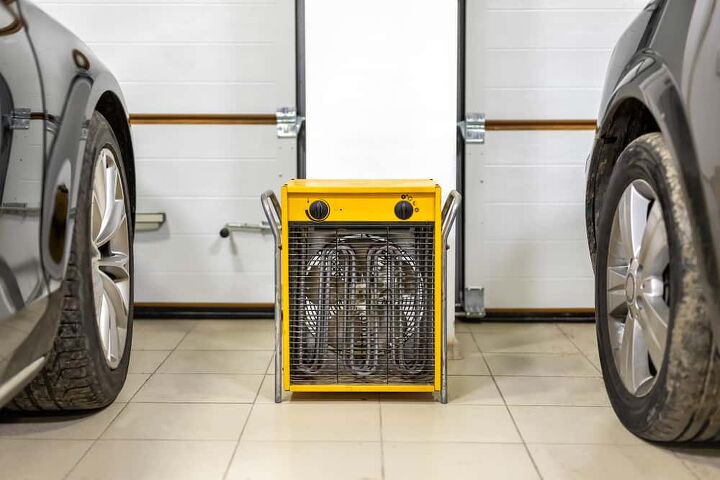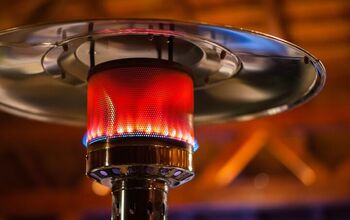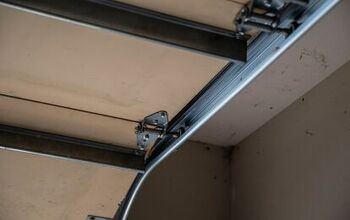Propane Vs. Kerosene Garage Heaters: Which One Is Better?

In the colder months of the year, it can be difficult and uncomfortable to work in your garage or workshop without a heat source. The frigid conditions can make it difficult to get things done when all you can think about is how cold it is.
That is why introducing a heat source is so important. Central heating can be too costly an installation, making a garage heater the more feasible option. When it comes to the debate of kerosene garage heaters versus propane garage heater, it typically comes down to cost and personal preference, with kerosene being the slightly cheaper option. This guide will break down the differences between the two in full.
Remember Safety First
When using either of these garage heaters, the most important thing to remember is that all safety considerations should be met. Make sure they are kept in a position that ensures there will be no fires and inherent danger while in use.
When used properly, kerosene and propane heaters can keep your garage space nice and warm in even the most frigid of temperatures. For those who enjoy working in their garage throughout the year, it can mean the difference between getting a project done and having to put it on the shelf for the winter.
The Pros and Cons of Kerosene Garage Heaters
Let’s first start with the pros and cons of kerosene garage heaters. First and foremost, kerosene heaters are meant for both indoor and outdoor use, making them a versatile choice for garage spaces.
Compared to other gas-fueled heaters, kerosene heaters are considered to be the safer choice. Moreover, they tend to be much more portable than the competition, easily moved from one place to another. Most importantly, they don’t require electricity of any kind so they can be used in a moment.
Like any machine that produces heat, it can be a potential fire hazard if kept in the wrong place. They also have the potential for carbon monoxide buildup if they are kept in garages with poor ventilation.
Pros of Kerosene Garage Heaters
- Burns fuel efficiently
- Easy to use
- Easy to move where you want
- Heats quickly
Cons
- Potential fire hazard if not used carefully
- Requires proper ventilation as carbon monoxide can build-up
The Different Types of Kerosene Heaters
It is also important to note that not all kerosene heaters are created equally. There are a couple of different kinds that you can choose from. It depends on how big of a space that you will need to heat, what you intend on using the heater for, and the amount of ventilation that you have available.
Knowing these things will help you choose the right kerosene heater and ensure that your space is outfitted properly.
Forced Air Kerosene Heater
This type of kerosene heater makes use of a cylinder body type where heated air is forced out into the space that needs heating. It is similar to radiant heat (in the next section) in that it is directional, but the difference is that it warms the air instead of surfaces.
All of this means that the forced air heater has a larger heat spread, making it perfect for larger spaces. The only downside is that these types of heaters can get to be pretty loud since they are built with a similar design to that of a jet engine.
Radiant Kerosene Heater
Radiant heaters have a circular wick that transports fuel into the burner unit, which is also known as a catalytic converter. Unlike the forced air heater, which heats the air, this heater heats up surfaces and objects that are nearby. The further away objects are, the longer they take to heat.
Radiant heaters work through the use of reflected infrared heat waves. That means they warm instantly. The only problem is that they project forward, whereas forced-air projects heat in all directions.
Convection Kerosene Heater
These tend to have a circular tower design that comes with safety grillwork since heat moves out in all directions. Convection heaters are very efficient and even start-up in a similar fashion to radiant heaters. The only difference is convection heaters have less flame when they startup.
Convection heaters are great for warming large spaces and are generally considered to be quite safe. Still, they need to be kept at least 2 feet away from the other surfaces in your garage to prevent fires.
Costs of Kerosene Garage Heaters
Kerosene heaters need a certain quality of kerosene to run if you want a clean burn. Keep in mind that the better the grade, the cleaner and more efficient the burn. That saves you money over time and provides better overall heat coverage.
The problem is that kerosene prices can and will fluctuate. Maybe they were cheap last year but prices have risen this year. The cost depends on insulation, ventilation, and the number of BTU’s being used.
The Pros and Cons of Propane Garage Heaters
Propane garage heaters are very similar to the kerosene type in that they can be bought based on the type of space that requires heating. The difference is that propane heaters tend to be either fixed into place or completely portable.
Another great thing about propane heaters is that they can be hooked into existing lines of propane that are already on your property if applicable. If not, they have portable tanks that they can run off with little worry.
And much like kerosene heaters, they will generally require decent ventilation to be safe. Moreover, some propane models may not work at certain elevation levels, so check the manufacturer details first.
Pros
- Cost-effective
- Clean and efficient burn
- Heats quickly
Cons
- Might not work at certain elevations
- Requires good ventilation on portable models
The Different Types of Propane Garage Heaters
Similar to kerosene heaters, propane garage heaters come in different sizes and shapes. They also tend to use the same basic principles that the other fuel-powered heaters use, making them someone easy to understand in comparison.
There are certain types of propane heaters that use a fan to circulate heat and may require an electrical connection. There are others still that have thermostats built in that require an electrical hookup as well.
Forced Air Propane Heaters
You will notice that the different types of propane heater are the same as kerosene heaters. Like the kerosene version, these propane units force air in one direction. They are quite portable and warm up the space in front of the heater quickly. And like the kerosene version, they are quite noisy as well.
Radiant Propane Heaters
These use gas-fired heaters to warm their emitter tubs. When the tubes heat, they radiate heat to any objects that are nearby, creating instant warmth. The further away objects are, the longer they take to warm. The great thing about these is that they can also be mounted to walls and ceilings.
Convection Propane Heaters
This type of heater is similar to the kerosene version in that they distribute heat in all directions. They warm the air instead of objects and are considered to be the safest type to use. They still require proper ventilation and space, though.
Costs of Propane Heaters
Propane is considered to be a cost-effective way of heating, but it is entirely dependent on fuel prices. As fuel prices change, propane costs do as well. Kerosene tends to be easier to get and more readily available, though you can have propane delivered to you.
Another thing to consider is that you don’t have to worry about the grade of propane. There is no difference in quality, and you can simply purchase propane without having to consider what type it is.
Which is Better?
When it comes down to it, they are very similar in nature. Both are cost-effective and efficient for warming your garage. The real choice comes down to your specific needs and personal preference. Look at your available space and the things that will be required to run each (if your propane heater has an electrical component).
You can’t go wrong with either and neither will cost substantially more than the other. Both make for a great way to keep your garage warm during the winter.

Ryan Womeldorf has more than a decade of experience writing. He loves to blog about construction, plumbing, and other home topics. Ryan also loves hockey and a lifelong Buffalo sports fan.
More by Ryan Womeldorf



























